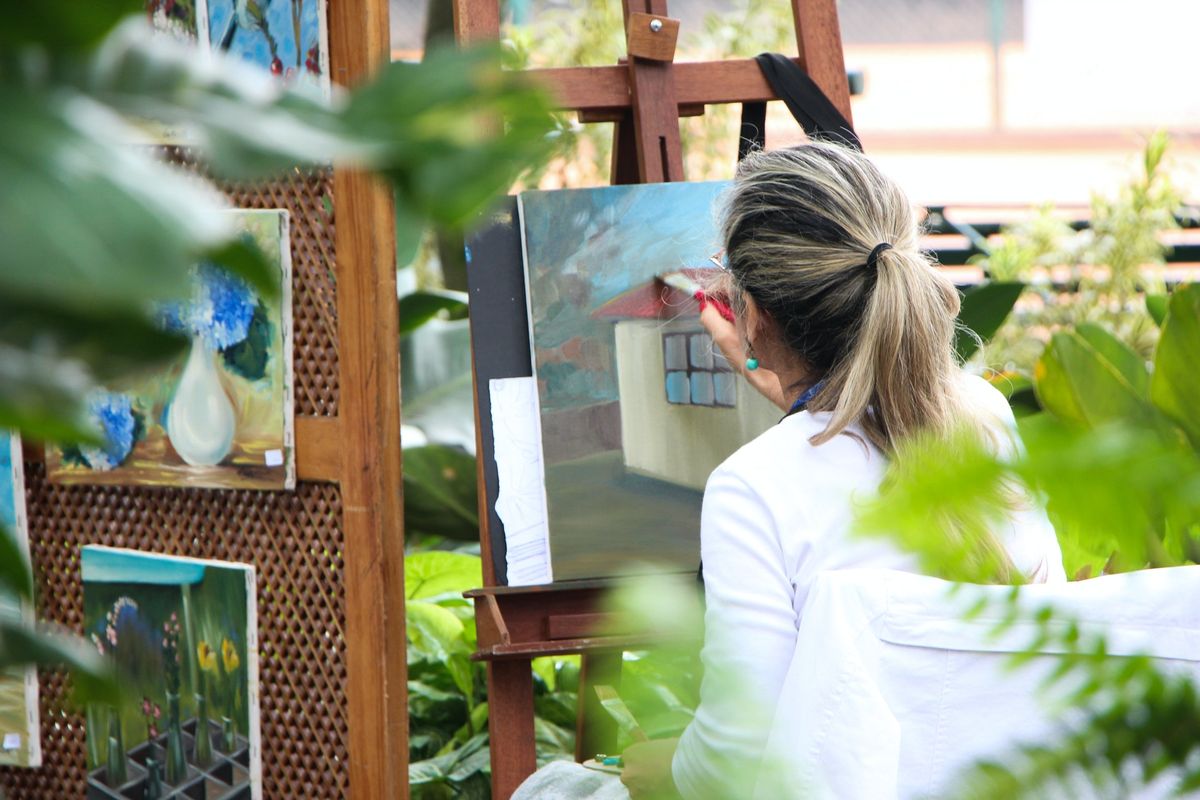Art therapy activities to improve your mental well-being

A few minutes every morning is all you need.
Stay up to date on the world's Headlines and Human Stories. It's fun, it's factual, it's fluff-free.
There is a saying that “a picture paints a thousand words." For art therapists like Leah Guzman, art can mean and provide a lot more. “With guided support, such as art therapy, you can learn to cope with traumatizing events that are happening now or have happened in the past," she explains. With the COVID-19 pandemic encouraging us to practice social distancing and remain in our homes, self-care has become an integral part of our routines.
Aside from reading, meditating or engaging in other indoor activities as simple as having a bubble bath, art therapy is a beneficial self-care activity to add to your quarantine routine. Art therapy does not require artistic abilities, rather it intends for the artist to find peace and tranquillity through their creative process. To help you take your artistic expression to a therapeutic level, we’ve compiled a few art therapy activities to improve your mental well-being while you are spending extra time indoors at home.
The self-care box
Creating a “self-care box” is a simple activity that can be particularly useful in times of distress. It is comforting to have handy a box of small trinkets or personal mementos that evoke positive affirmations and inspiration. You can create a personalized box using cardboard, or even purchase an inexpensive wooden box from any arts and crafts store.
Decorate your box to reflect your own ideas of self-care. These can be in the form of positive affirmations or quotes that you write on the box itself or pieces of paper which are folded and placed inside the box to read when feeling down. Use the box also for items that evoke peace and comfort such as pictures of friends or family, postcards, crystals, clips of quotes or poetry, or even treasured jewelry. You can also leave items like face masks or stress balls in the box to be used when you feel drained and in need of relaxation.
Feeling wheel
When dealing with a lot of emotions, it’s not always easy to compartmentalize. Recognizing and labeling your feelings is often the initial step to coping with them. Making a “feeling wheel” is a practical activity for those who want to be more in touch with their emotions.
You can begin by drawing a circle and dividing it into eight sections. Then write one of your own emotions in each section. Finally, using any materials you have available – like colored pencils, paints or fabric – pick a color that reflects that feeling and fill in the section. In her book “Essential Art Therapy Exercises,” Leah Guzman recommends considering the following:
“Which feeling is written down first? Which feelings are currently being experienced? Are there more positive or negative emotions on your feeling wheel?"
Response art
Most people have a specific quote, poem, passage or song lyric that is meaningful or sentimental to them. For this therapeutic activity, choose a phrase that resonates with you and make it the basis of your creative process. Respond to it however you desire, whether that be through doodling, coloring with colored pencils or pastels or using watercolor paints or clay. The objective is to make physical your emotional response to the words.
As you create, Debroah Farber, a member of the Art Therapy Practice advisory board, encourages that you consider the following:
“What about the prompt is inspiring? How do you feel as you create the art? What are you intending to capture?”
Nature art
Using nature in your art therapy is a creative solution to bring the outdoors inside during the quarantine. Head outdoors – safely with a mask, of course – whether that be to a nature trail, rocky mountains or a beach. Collect items that you find interesting. This can be leaves, sticks, flowers, rocks, shells or other found objects. After returning home, you can use the collection of found objects to create a sculpture or ornament.
For a more digital art therapy option, you can take a nature photo walk instead, which can be through nature books or even the internet. Instead of collecting materials, you can create art by saving pictures which provoke inspiration, interest or any other emotion. Finally, use the collected photos to create a digital collage or save the images in a folder to refer to when in need of a moment of tranquillity. Throughout your artistic process – whether physical or digital – consider the following:
“What do the materials or images feel or look like? What is captivating about the materials or images you have chosen?”
Life during the pandemic can be especially stressful, but these art therapy activities may be just what you are looking for to expand your creative expression while getting in tune with your feelings.
Have a tip or story? Get in touch with our reporters at tips@themilsource.com




Comments ()